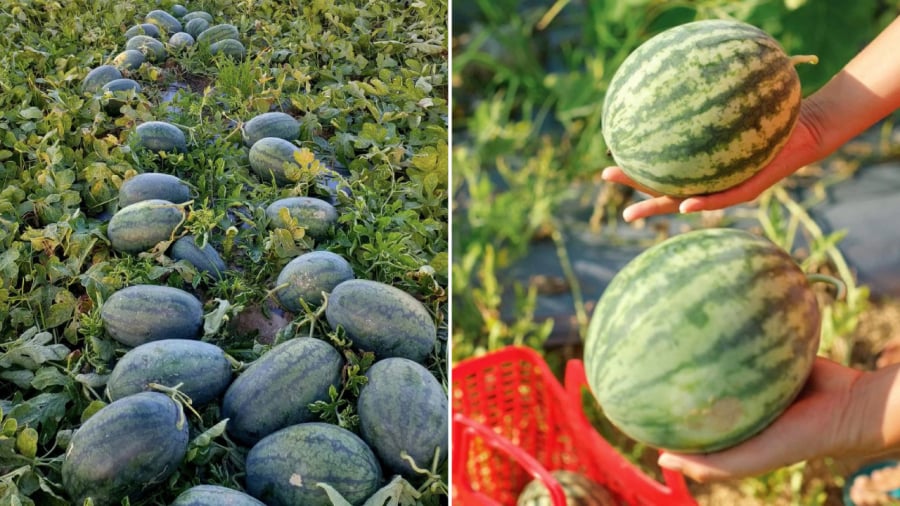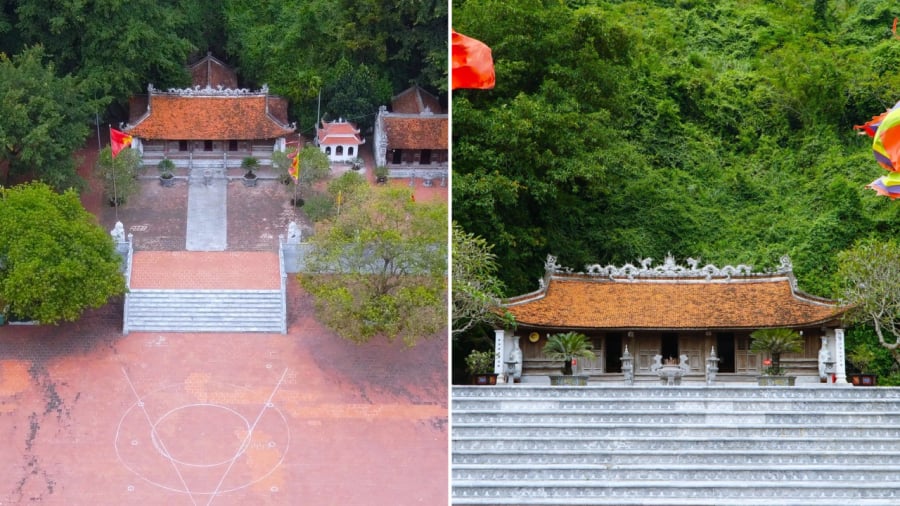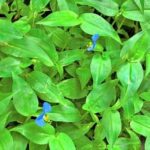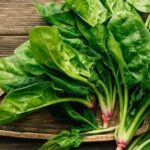The legend of Mai An Tiêm is intimately associated with the story of watermelon. Since childhood, all Vietnamese have heard this tale.
The Legend of Watermelon and the Story of Mai An Tiêm
The story of Mai An Tiêm is not merely oral folklore but is also mentioned in ancient chronicles. There are some differences between the folk version and the written records, but they share fundamental similarities.
According to Lĩnh Nam chích quái liệt truyện, during the time of the Hùng Vương kings, a seven-year-old foreign boy arrived by merchant ship from the south to Văn Lang. Hùng Vương bought the boy and made him his servant.
As time passed, the boy grew into a tall, intelligent, and handsome man. The king favored him and adopted him as his son, naming him Mai Yến, with the courtesy name Mai An Tiêm. The king also arranged a marriage for him with a beautiful and virtuous woman. Soon, they had a son.

Mai An Tiêm was beloved and trusted by the king, and he soon lived a wealthy life. Many people tried to curry favor with him and brought him gifts of all kinds. This made Mai An Tiêm arrogant. He even began to think that his wealth was due to his own merits and not the king’s grace.
When Hùng Vương learned of this, he became angry and ordered that Mai An Tiêm and his family be exiled to a deserted island outside Nga Sơn sea gate. This place was untouched by humans, and the king provided only enough provisions for four to five months.
One day, Mai An Tiêm witnessed a white crane flying in from the west. It perched on a high cliff and cried out three or four times, dropping six or seven black seeds onto the sand. Over time, these seeds sprouted, grew into large trees, and bore fruit.
Mai An Tiêm observed that birds ate these strange fruits and remained healthy, so he reasoned that humans could eat them too. He believed that this was a heavenly gift to sustain his family.
When he tasted the fruit, he found it delicious and sweet, with a refreshing quality. The surplus of fruit could be traded with passing ships for rice. Thus, Mai An Tiêm found a way to sustain his family.
When asked about the name of this strange fruit, Mai An Tiêm called it “Tây qua,” referring to the fact that the seeds were brought by a bird from the west.
One day, Hùng Vương remembered his foster son and sent someone to check on Mai An Tiêm’s situation. The messenger returned and reported everything. The king acknowledged that Mai An Tiêm’s past words, though arrogant, had proven true.
Hùng Vương then recalled Mai An Tiêm and reinstated his official position. The king also bestowed additional wealth upon the couple. Their place of residence was named An Tiêm Sa Châu by the king.
Where is the Deserted Island Where Mai An Tiêm Grew Watermelons Now?
The island where Mai An Tiêm was exiled is no longer deserted; it has become part of the mainland. Over time, people settled there, forming villages. This place later became known as Mai An village (also called Mai Thôn). Today, it is located in Nga Sơn District, Thanh Hóa Province.
From the 12th to the 15th of the third lunar month every year, locals and visitors flock to the temple dedicated to Mai An Tiêm, situated at the foot of An Tiêm Mountain in Nga Phú Commune, Nga Sơn District, Thanh Hóa Province, to attend a festival and pay their respects to the “patron saint of watermelon growers.”

The temple honoring Mai An Tiêm today spans thousands of square meters and is surrounded by lush greenery.
Behind the temple is a spacious cave that stays warm in winter and cool in summer. Locals believe that this could have been where Mai An Tiêm’s family lived. To prevent any potential damage to the cave, the entrance was sealed, and an altar was erected outside.

Today, the people of Nga Phú Commune, in particular, and Nga Sơn District, in general, continue the tradition of watermelon cultivation. Watermelons are a specialty of the region, contributing to the local economy and providing a source of income for the residents.
The Ultimate ‘Natural Cleanse’: Two Fruits from Vietnam with Minimal Pesticides, Delicious Taste, and Nutritional Benefits Worth Discovering
Uncover the two ‘treasures’ grown in Vietnamese gardens, renowned for their cultivation process that almost eliminates the need for pesticides. Not only do they boast delicious, naturally sweet flavors, but they are also packed with essential nutrients, offering a bountiful supply of goodness for your body.
The Humble Vegetable: A Nutritional Powerhouse Praised by American Experts.
With an exceptionally high iron content that surpasses even beef, this vegetable is being hailed as the new “king of blood enrichment.” Its impressive nutritional profile, packed with essential vitamins and minerals, makes it an unparalleled choice for those seeking to fortify their health and enhance their overall well-being.







































